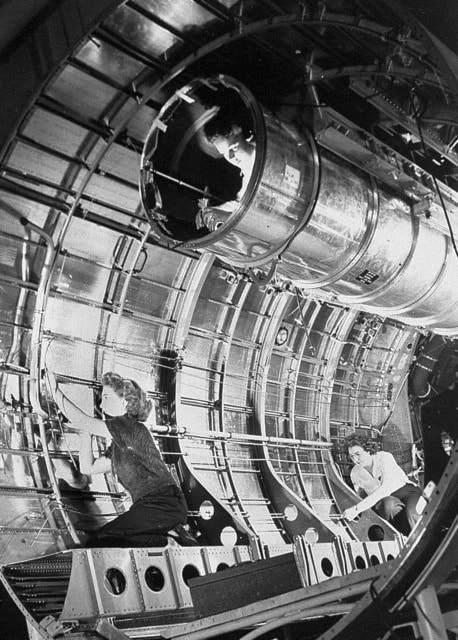When Jack Nellist was hired by Boeing Aircraft Canada in 1943, he instantly became a part of the American war effort despite living in British Columbia.
“It was kind of strange of to me,” Nellist, now 87, told the News Bulletin. “But at 16 I didn’t really have much of a feel. I was interested in airplanes. That was my main interest because I was designing and building them since I was 10.”
For the next two years, Nellist essential worked for the U.S. Navy as an aeronautical draftsman for Boeing at its factory in Richmond, B.C., where the Catalina PBY-5A was built as well as the bomb bay sections for the B-29 Superfortress, which were shipped to Renton, Wash. for assembly.
“I wandered in there and filled out an application and they looked at my drawings and told me to report to work the following day,” Nellist recalled. “I was lucky to be hired by Boeing at age 16.”
Tonight (Sept. 11) at the Bowen Park Activity Centre, Nellist, a resident of Nanaimo, will be sharing his stories and his book Aircraft Production During World War II: Boeing Aircraft of Canada, which was published in 2010.
Ever since Nellist was a young boy he had displayed a keen interest in airplanes. At the age of 15, Nellist took a home-study course in aeronautical drafting from Curtis-Wright Technical Institute, which he assumed would help him when he ended up working for Boeing. However, that wasn’t the case.
“They weren’t doing aeronautical drafting,” he said. “In other words there were no T-squares or set-squares or compasses in sight. All I could see were these large drawing tables with steel edges on them.”
At the time, Boeing employed a large majority of workers at their Seattle and Renton plants who were unable to read engineering blueprints. In order to solve the problem, the company came up with a solution to illustrate the blueprints in large diagrams.
“What Boeing Canada was doing was taking the engineering blueprints and redrawing them in perspective with cutaway views and exploded views,” he said. “That meant that someone with no experience could look at the drawing and assemble a component.”
Unfortunately for Nellist, he had never had experience drawing illustrations the way Boeing wanted them done.
“I was standing there with my mouth open because I hadn’t been trained to do that,” he said. “But it didn’t take long ... within a month I was fine.”
According to Nellist, one of the reasons why Boeing Canada received the contract to build the Catalina PBY-5 was because of the Japanese presence along the coast of Vancouver Island and Washington state.
“Right after Pearl Harbor there were a total of nine Japanese submarines that were looking for the five U.S. aircraft carriers that they had missed during the raid. The Japanese came out to the West Coast, particularly the west coast of Vancouver Island,” Nellist said. “For a period of several months they would roam up and down the coast, as far down as California, but their favourite spot was to sit out by the entrance of the Juan De Fuca Strait. They actually targeted about 17 freighters.”
Between 1943 and 1945, the Richmond factory produced 362 Catalina PBY-5As and 676 bomb bay sections for the B-29, with many of the sections assembled on planes used in a number of raids against the Japanese. The Richmond factory shut down almost immediately following Japan’s surrender.
After his stint at Boeing Canada, Nellist would go on to have a successful career with B.C. Tel as a draftsman.
Despite the fact that Canadians played a role in the U.S. war effort, the majority of Americans are unaware. Nellist recalled a time in Palm Springs, Calif., where he explained to a young pilot flying the only flyable B-29 that it had Canadian made parts.
“He just shook his head and couldn’t believe it,” Nellist said.
When Nellist looks back at his work history, he’s proud to see Boeing Canada on his resumé.
“I found the job to be the best job I ever had in my lifetime,” he said.
Jack Nellist speaks at Bowen Park Activity Centre tonight at 7:30 p.m. The event is free of charge. For more information, please visit bit.ly/BoeingCanada. To purchase Aircraft Production During World War II" Boeing Aircraft of Canada visit http://www.amazon.ca/Aircraft-Production-During-World-War/dp/1426938209
arts@nanaimobulletin.comTwitter: @npescod
